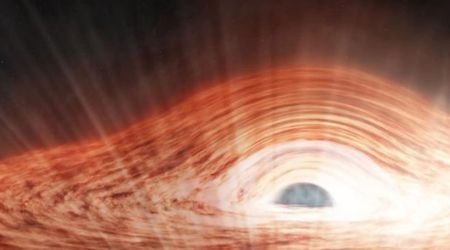Rosette Nebula

Even though Monoceros is a rather inconspicuous constellation, it more than makes up for it with its many beautiful telescopic treasures. One of the most attractive deep sky objects in Monoceros is NGC 2244, a bright open star cluster visible even to the naked eye under good conditions.
Through binoculars or a small telescope, it appears as a large roughly rectangular aggregation about 25 arcminutes in size, containing 20 stars brighter than magnitude 11 and more than a dozen fainter members.
It is believed that the cluster’s stars formed about 500,000 years ago from a surrounding nebula, a gigantic wreath of gases and dust called the Rosette Nebula.
Spanning 80×60 arcminutes, the Rosette is difficult to see through telescopes due to their small field of view, but with binoculars, the wisps of the nebula become clearly visible if observed under very dark skies.
Less than two degrees away from the Rosette Nebula you will find Plaskett’s Star, one of the most massive binary stars known, with a total mass of about one hundred times that of the Sun. Its name honors John Plaskett, the Canadian astronomer who discovered that it is a spectroscopic binary with a period of about 14 days. The star’s visual magnitude is 6.0, and it can be easily seen with binoculars. However, don’t expect to see the companion even if you use a large telescope.









